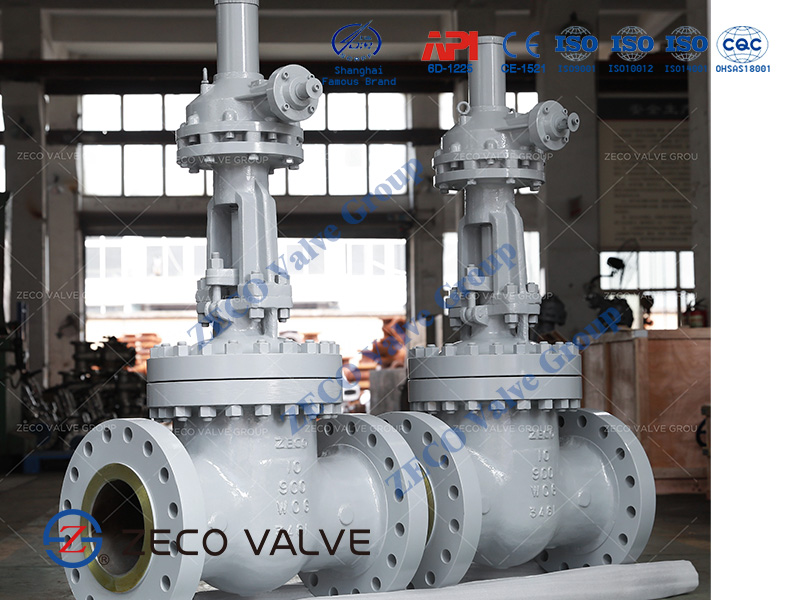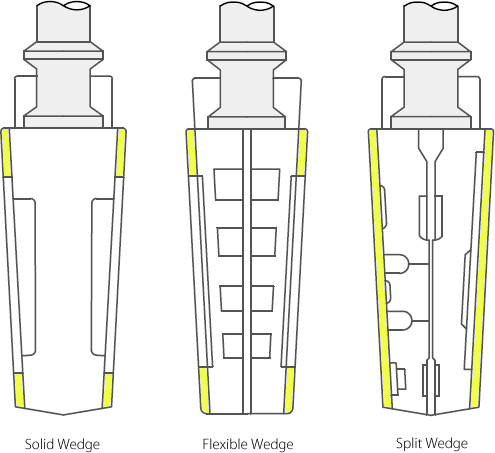What is an Actuator Gate Valve?
Actuator gate valve refers to the linear movement of the actuator of the gate valve through electric voltage or pneumatic and signal control to open or close the gate valve. Actuator gate valves can help you achieve the purpose of remote control, help you reduce labor costs, and improve production efficiency.
Types of Gate Valve with Actuator
Electric Actuated Gate Valve
An electric gate valve is one of the most commonly used cut-off valves, mainly used to connect or cut off the medium in the pipeline, not suitable for adjusting the flow of the medium. The gate valve is suitable for a wide range of pressure, temperature, and caliber, especially suitable for medium and large diameter pipelines.
Electric gate valve is suitable for water, oil, cement, paper pulp, and other media, and is widely used in paper and pulp, power plant, shipyard, wastewater treatment, and so on.
Pneumatic Gate Valve
A pneumatic gate valve uses a pneumatic actuator instead of a handwheel. By utilizing compressed air, the actuator can spin the stem to raise or lower the gate. This allows it to be operated remotely with no user on-site but requires a pneumatic system on site.
Types of Pneumatic Gate Valves
When pneumatic pressure is available, gate valve actuators can be:
- Double-Acting Valve Actuator, for double-acting actuation
- Spring-Return Valve Actuator, for single-acting actuation
Hydraulic Gate Valve
Hydraulic gate valves are based on ZECO’s robust manual gate valves and are suitable for well testing, high pressure drilling, and production accompanied by sour gas or/and sand. These hydraulic gate valves are fully designed, manufactured, and tested in accordance with API Spec. 600.
Types of Hydraulic Gate Valves
When hydraulic pressure is available, gate valve actuators can be:
- Double-Acting Hydraulic Actuator, for double-acting actuation
- Spring-Return Valve Actuator, for single-acting actuation
When electric power is available:
Electro-hydraulic Linear Actuator, for double and single-acting actuation
What is a Surface Gate Valve?
Surface Gate Valves are available in bore sizes from ½” to 56” and pressure ratings ranging from ANSI Class 150 to 15,000 psi.

Gate Valve Structure
Stem of a Gate valve
Gate valves are divided into rising stem gate valves and non-rising stem gate valves according to the stem structure and movement mode.
The stem of the rising stem gate valve drives the gate up and down together, and the drive thread on the stem is outside the valve body. Therefore, the opening and closing, and position of the gate can be intuitively judged according to the movement direction and position of the valve stem, and the drive thread is convenient for lubrication it is not corroded by the fluid, but it requires a larger installation space.
The driving thread of the non-rising stem gate valve is located inside the valve body. During the opening and closing process, the valve stem only rotates, and the gate moves up and down in the valve body. Therefore, the height dimension of the valve is small. Non-rising stem valve gates are usually equipped with an opening and closing position indicator above the valve cover, so as to be suitable for ships, pipe trenches, and other environments with small spaces and high dust content.
Disks of a Gate valve
Gate valves are available with different disks or wedges. The range of the Gate valves is usually made by the type of wedge used.
The most common were.
- Solid wedge is the most commonly used disk by its simplicity and strength.
- A valve with this type of wedge can be installed in each position and it is suitable for almost all liquids. The solid wedge is a single-piece solid construction and is practically for turbulent flow.
- Flexible wedge is a one-piece disc with a cut around the perimeter to improve the ability to correct mistakes or changes in the angle between the seats.
- The reduction will vary in size, shape, and depth. A shallow, narrow cut gives little flexibility but retains strength.
- A deeper and wider cut, or cast-in recess, leaves little material in the middle, which allows more flexibility, but compromises strength.
- Split wedge is self-adjusting and self-aligning to both seat sides. This wedge type consists of two-piece construction which seats between the tapered seats in the valve body. This type of wedge is suitable for the treatment of non-condensing gases and liquids at normal temperatures, particularly corrosive liquids.

Seats of a Gate valve
Seats for Gate valves are either provided integral with the valve body or in a seat ring type of construction. Seat ring construction provides seats that are either threaded into position or pressed into position and seal welded to the valve body. The latter form of construction is recommended for higher temperature service.
Integral seats provide a seat of the same material of construction as the valve body while the pressed-in or threaded-in seats permit variation. Rings with hard facings may be supplied for the application where they are required.












